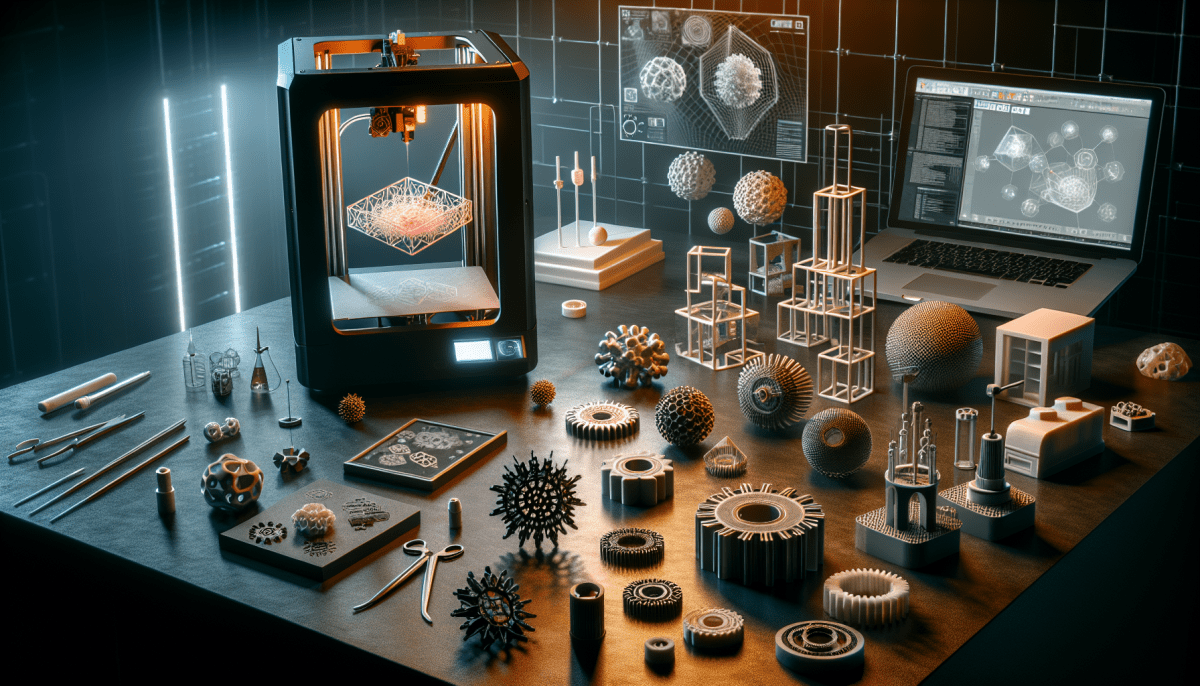Getting started with 3D printing is an exciting journey! If you're new to this world, it can feel a bit overwhelming at first, but don’t worry. Let’s break it down into simple steps to help you dive right in.
First things first, you’ll need a 3D printer. There are many options out there, so think about what you want to print. Are you aiming to create cool gadgets, art, or maybe even toys? Some popular beginner-friendly models are the Creality Ender 3 and the Anycubic i3 Mega. They’re affordable and have great community support if you run into any hiccups.
Once you've got your printer, it’s time to choose your filament. This is the material you'll use to create your objects. PLA is a top pick for beginners because it’s easy to use and comes in a rainbow of colors. Plus, it’s biodegradable, which is a bonus if you're eco-conscious!
After that, download some slicing software, like Cura or PrusaSlicer. This is where you’ll prepare your 3D models for printing. You can find tons of free models on websites like Thingiverse or MyMiniFactory. Just pick one, load it into the slicing software, and tweak the settings until you're happy with how it looks.
Finally, it’s time to print! Make sure your printer's bed is level and watch as your creation comes to life layer by layer. Don’t get discouraged if your first prints don’t turn out perfect. It takes a bit of practice, but that’s part of the fun. Enjoy the process and experiment with different designs!
Choosing the Right 3D Printer for You
Choosing the right 3D printer can feel overwhelming, especially with so many options out there. But don’t worry. I’ll walk you through it. Start by thinking about what you want to print. Are you into making fun and simple items, or are you looking to create more intricate models?
If you’re just getting started, a basic FDM (Fused Deposition Modeling) printer is a solid choice. They’re user-friendly and affordable. Brands like Creality and Anycubic have great models that won’t break the bank and offer decent print quality. These printers use plastic filament, which is pretty easy to find and comes in all sorts of colors.
If you’re feeling adventurous and want to dive into more detailed projects, consider SLA (Stereolithography) printers. They use resin to create super-detailed prints. However, be aware that they can be a bit trickier to handle, and the resin can get messy. If you’re ready to take on that challenge, look at brands like Elegoo or Anycubic for beginner-friendly options.
Another thing to think about is size. Do you have enough space? If you plan on printing larger items, check the build volume before making a decision. You’d hate to get home and realize your printer is too small for what you had in mind. Portability matters too—if you're planning to move it around a lot, go for something lightweight.
Lastly, don’t forget about the community and support. Look for brands with lots of online resources, forums, and helpful customer service. This makes troubleshooting way easier and you’ll learn a lot from others who’ve been there before. Make the choice that feels right for you and happy printing!
Essential Supplies for Beginner 3D Printing
Getting started with 3D printing requires a few essential supplies to make your experience enjoyable and successful. Let’s break down what you need to kick off your journey without any fuss.
First up, you’ll need a reliable 3D printer. Look for something user-friendly, like the Creality Ender 3 or the Anycubic i3 Mega. These models are popular with newbies for their affordability and easy setup. You want a printer that can handle a variety of projects right out of the box.
Next, you can’t forget about filament. PLA is a great choice for beginners. It’s easy to work with, biodegradable, and comes in tons of colors. Grab a few spools to get started, and later on, you can experiment with other materials like ABS or PETG.
Don’t overlook tools and accessories! A good set of tweezers, a scraper, and some snips will make handling prints easier. Plus, a sticky build surface can help ensure your prints stick well during the process. You might also want some glue sticks or a spray adhesive to keep things in place.
Finally, keep in mind that slicing software will be your best friend. Programs like Cura or PrusaSlicer are free and make turning your designs into 3D printable files a breeze. This software provides you with all the settings you need to customize your prints perfectly.
Tips for Successful 3D Prints Every Time
Getting great prints can feel tricky at first, but with a few handy tips, you can boost your success rate. First things first, always level your print bed. An uneven surface can lead to all sorts of printing headaches. Many printers come with built-in leveling features, so don’t skip this step!
Next up, make sure you’re using the right filament for your project. Different materials have unique properties. For example, PLA is super user-friendly and gives great results for beginners, while ABS is tougher but can be finicky. Choose your filament based on your project needs and printer specs.
Don’t forget to check your print settings! Adjusting things like temperature and speed can make a huge difference. Always start with your printer's recommended settings, and tweak them as you get the hang of things. Every printer handles filament a little differently, so it’s all about finding what works for yours.
If you run into problems, keep calm and troubleshoot! Issues like warping or poor adhesion can be sorted out by adjusting bed temperature or adding a brim or raft. And trust me, a little patience goes a long way. Experiment until you find what works best!



